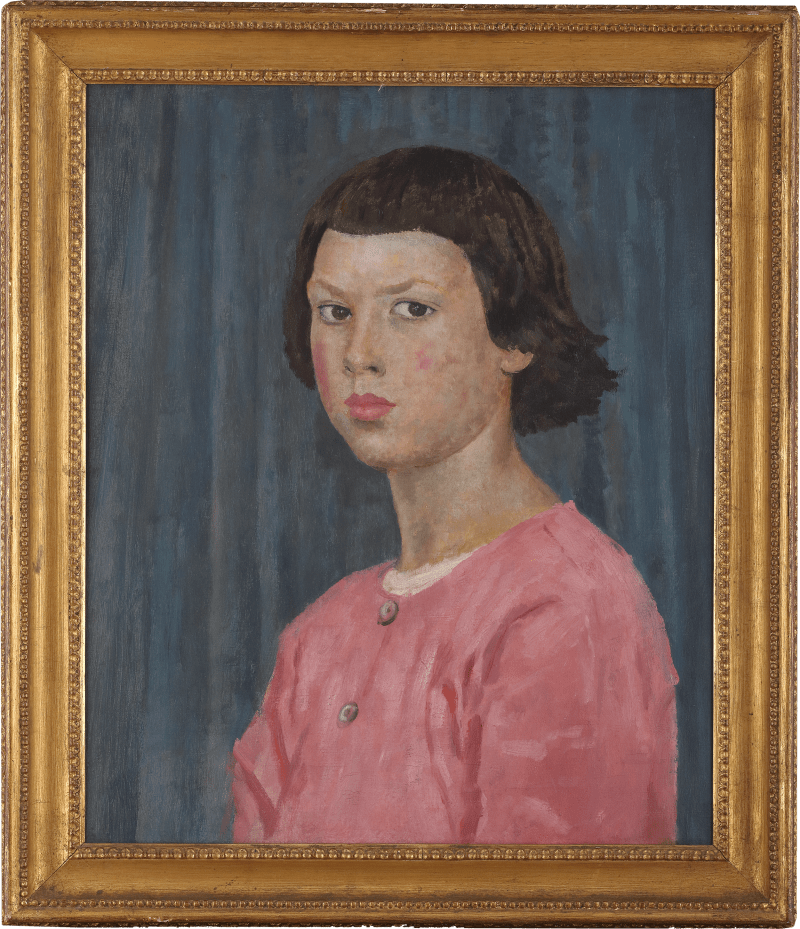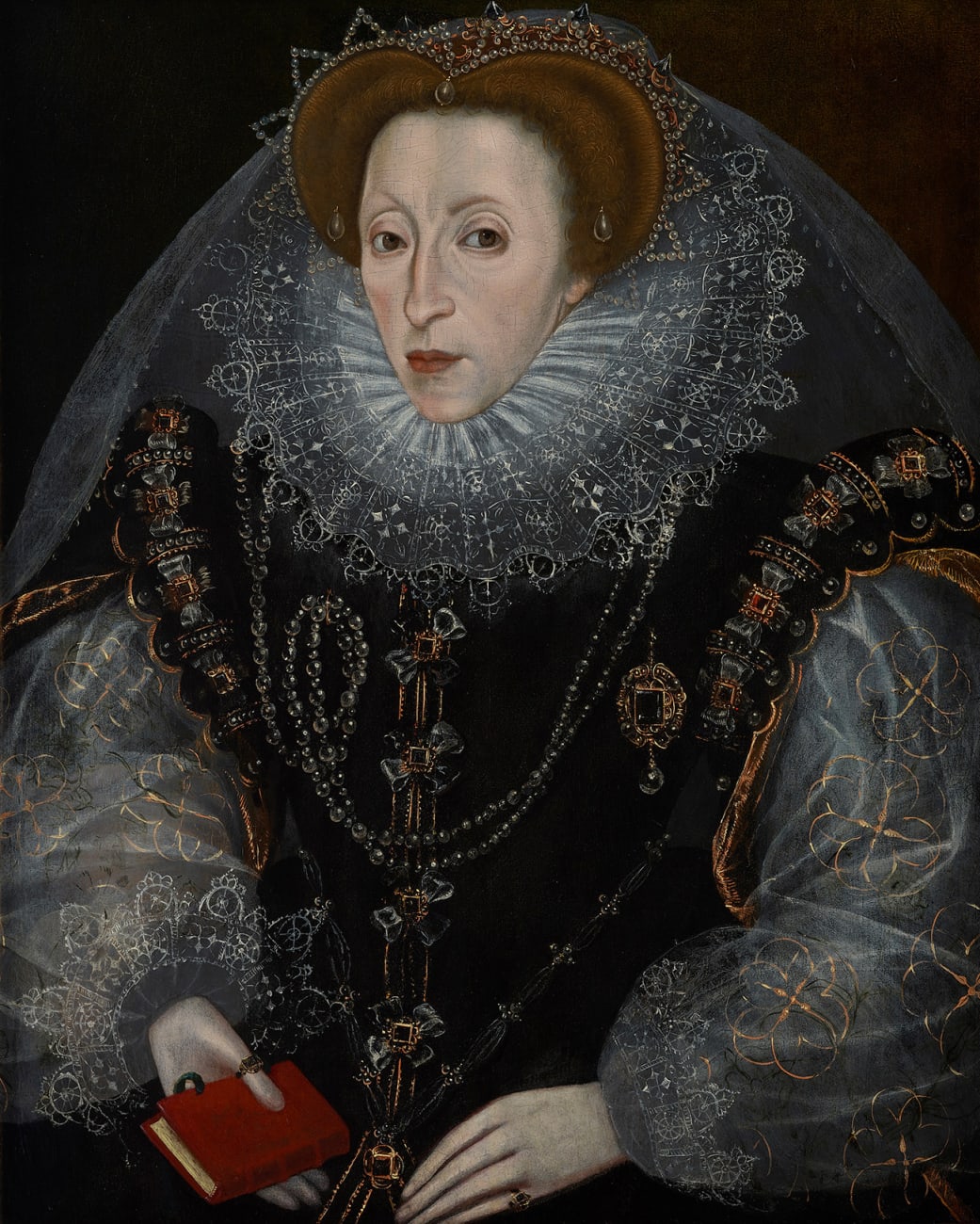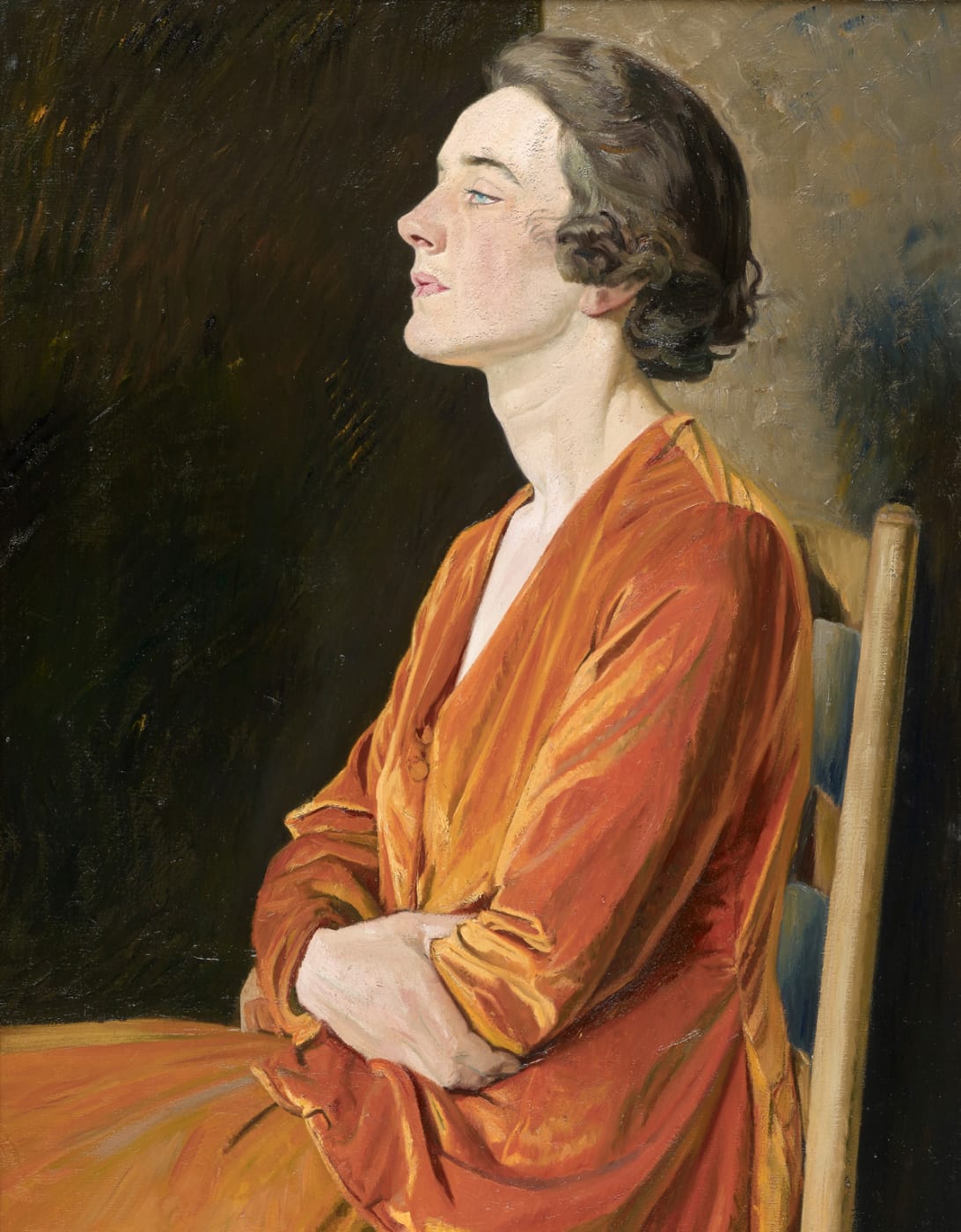
Augustus Edwin John
(1878-1961) ArcadiaProvenance
The artist;
His studio sale, Christie’s, London, 21 June 1963, lot 171;
Private collection;
Christie’s, London, 12 December 2014, lot 163;
Philip Mould & Company, acquired from the above.
This ambitious work, which never left the possession of the artist, exemplifies John’s desire in the second part of his career to produce large scale subject paintings that moved away from his normal portrait production.
Augustus John was one of the most prominent painters of the twentieth century. He was radical and wild in nature, which led fellow artist Wyndham Lewis (1882-1957) to describe him as ‘a great man of action into whose hands the fairies had stuck a brush instead of a sword’.[1]
Painted c.1938, this work is a dramatic synthesis of elements inspired by mid-nineteenth-century European art movements, such as symbolism and romanticism, with an energetic application of colour and pigment that acknowledges continental Post-Impressionism. This determination to paint bold decorative scenes did not go unnoticed and was certainly not unsuccessful; the critic Roger Fry (1866-1934) praised John for his ability to design on a monumental scale, comparing him to the great English symbolist painter George...
This ambitious work, which never left the possession of the artist, exemplifies John’s desire in the second part of his career to produce large scale subject paintings that moved away from his normal portrait production.
Augustus John was one of the most prominent painters of the twentieth century. He was radical and wild in nature, which led fellow artist Wyndham Lewis (1882-1957) to describe him as ‘a great man of action into whose hands the fairies had stuck a brush instead of a sword’.[1]
Painted c.1938, this work is a dramatic synthesis of elements inspired by mid-nineteenth-century European art movements, such as symbolism and romanticism, with an energetic application of colour and pigment that acknowledges continental Post-Impressionism. This determination to paint bold decorative scenes did not go unnoticed and was certainly not unsuccessful; the critic Roger Fry (1866-1934) praised John for his ability to design on a monumental scale, comparing him to the great English symbolist painter George Frederick Watts (1817-1904).[2]
John was a significant exponent of Post-Impressionism in Britain that he fused with his consummate drawing skills. He developed a technique of oil sketching directly onto bare canvas, as here, so that his working practices and thought processes are evident, notably in the drawing of the figures, whose relationship to one another John clearly pondered at length.
The importance of colour in John’s work hardly needs explaining, which is why particular care was taken in the conservation of this work, until recently obscured by decades of dirt and grime.
[1] M. Holroyd, Augustus John. London, 1996, p.273
[2] The Burlington Magazine, Vol.15, No.73, April 1909, p.17









